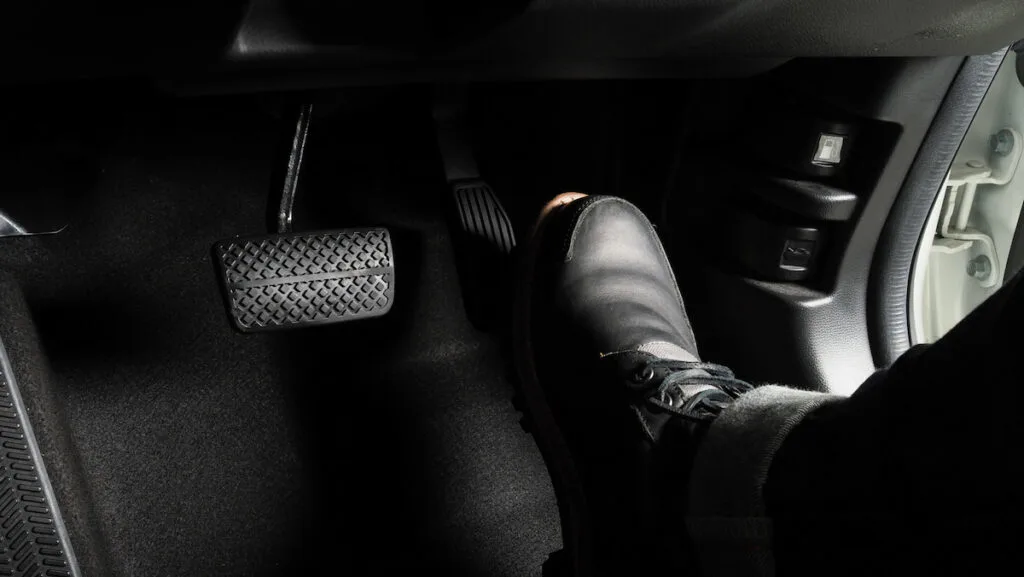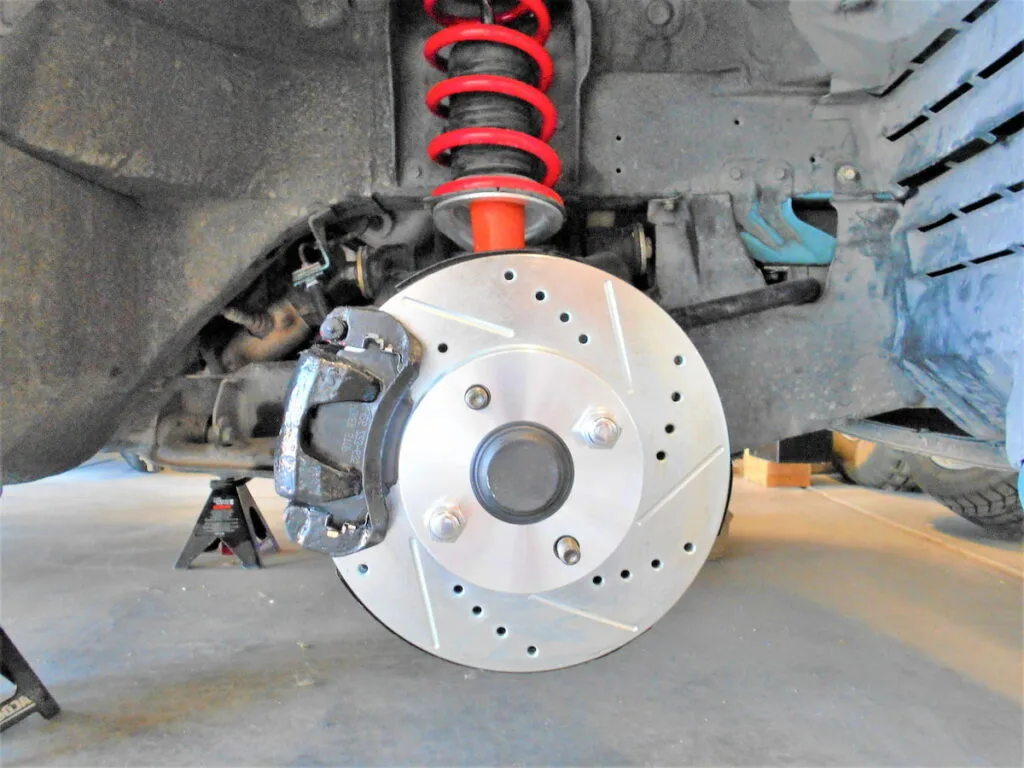*This post may have affiliate links, which means I may receive commissions if you choose to purchase through links I provide (at no extra cost to you). As an Amazon Associate, I earn from qualifying purchases. Please read my disclaimer for additional details.
Over time, various components of your vehicle, including the braking system, will eventually wear out with use. Unfortunately, when parts of the braking system, like the rotors, lose function, an accident is almost inevitable.
A rotor is a vital component of a vehicle’s braking system. It works simultaneously with the caliper and brake pads to bring your car to a halt. Going by this, if your rotor is defective, you will be unable to stop your vehicle.
Of course, this spells danger for you and anyone in or around the car at that point. Luckily, you can detect a faulty rotor before things go out of hand.
Below, we discuss 11 ways to tell if the rotors are bad. With these discussed tips, you can fish out a faulty rotor and seek professional help before too much damage results.
Table of Contents
Squealing Noise from the Brakes
When your rotor loses function, you will hear squealing, scraping, grinding, or squeaking noises whenever you pump the brakes.
If your rotors are warped or not flat, the brakes will squeak when you pump.
On the other hand, if the rotors are worn, you will hear a scraping sound. But besides scraping, worn brake pads may also squeal.
When rotors are worn, their surfaces and edges inside and outside become uneven. These surfaces and edges typically produce high-pitched sounds when you pump the brakes. However, they may also do the same while you drive.
If you hear a grinding sound, the rotors are in bad condition, and you are in danger. You must check your braking system at once.
Score Marks or Grooves on the Rotor
Another telling sign of a bad brake rotor is score marks or groove on the face of your rotor. Brake rotors develop these marks with regular contact with brake pads.
A well-conditioned rotor has a smooth surface without any score marks or grooves. So, when these markings show up on your rotor, its ability to slow the wheel drops.
Like most car parts and pieces, rotors wear out with prolonged use. So, when you feel your rotors are faulty or may get faulty, check for any score marks or grooves.
Knowing the last time your rotors were inspected and replaced is also vital. Rotors generally need to be replaced every 15,000-70,000 miles. However, the replacement period may also depend on the vehicle, driving style, and brake pads.

Vehicle Takes Too Long to Stop
Brake pads interact with rotors through a braking surface on the rotors. However, when scorings and grooves appear on the said braking surface, they create an unevenness. This unevenness hinders the efficiency of your brakes and causes vibrations in your brake pedals.
Also, when the pedal and rotor no longer interact, the resulting vibrations make it seem like the vehicle will not stop. Difficulty stopping or increased stopping distances can be dangerous, especially when you need to make an emergency stop.
Vibrating Steering Wheel When Braking
If your steering wheel vibrates and your brake pedal pulses when you slow down, your rotors may be faulty. This issue may either be caused by rust or overheating.
When you use your brakes, the brake pads press down on the rotors causing them to overheat. Over time the heat will make your rotors uneven, worn, and warped.
Since your brake pads are pressing against an uneven surface, your steering and braking will not be smooth. And this causes a vibration in your steering wheel.
Pulsating or Vibrating Brake Pedal
When you apply your brakes and notice excessive pulsation or vibration coming from them, your rotor may be faulty. You may also hear a grinding sound when the brakes start vibrating.
The vibrations occur when the brake rotor is badly worn or warped. They are felt in the pedal and sometimes the chassis or steering wheel of the vehicle.
The brake rotors may be warped if the pedal pulsates after applying the brakes. The pulsation stems from the failure of the pedal to make contact with the surface of the rotor. But it can also be caused by rust on the surface of the rotor.

Scratch Marks on the Rotor
When you check your rotor and notice it has several scratch marks, it might be time to replace it.
Rotors naturally get scratch marks even after a replacement. But if you notice too many deep scratches, you may need to replace the rotors.
Deep scratch marks on rotors can occur when stones get wedged between the rotor and brake pad. So, if you heard an annoying sound while braking at some point, it was probably because of a stone.
Large Edge on Outer Part of the Brake Rotor
Another way to tell if your brake rotor is faulty is to check the inner and outer edge of the rotor. A rotor with a large outer edge is defective and should be replaced.
Such edges tend to produce loud noises. They may even be there when the rotor is barely worn. Even at that, you should get a new rotor.
Loud Bangs While Braking
If you hear a loud bang while braking, your rotor may be defective.
Loud bangs occur when there is a crack in the rotor. And if the rotor is not replaced ASAP, you may lose brake function. Of course, this will cause an accident. So, ensure you replace the rotor at once.
Blue Coloration
You may notice a blue coloration when your brake rotor loses function. The said coloration is typically a consequence of excessive heat.
Engaging your brakes while you drive is a common cause of excessive heat. Most drivers often refer to it as riding the brakes. Drivers who reside in areas with steep slopes find themselves riding the brakes quite often.
If your rotor looks blue when you check it, you should get a professional to do a brake inspection. This is essential because your braking system may have been compromised by the heat that caused the coloration.

Rusty Rotors
The presence of rust on your rotor is also a sign of defectiveness. A rotor covered with rust will not operate smoothly.
When your rotor rusts, your brakes may become sticky and squeaky. So, when you notice any of the said signs, inspect the rotor. If you confirm that the rotor is rusty, seek professional help at once.
Rotor’s Thickness
Rotors are usually designed to have a thickness that decreases over time. However, if they degrade beyond the minimum thickness level, it affects the overall safety of your vehicle. So, replace your rotor when its thickness is below the manufacturer’s specification.
To check the thickness of a brake rotor, do the following:
- Open the wheels and separate the components of the braking system.
- Then proceed to measure the rotor’s thickness using a micrometer.
- After measuring, replace it if it does not meet the manufacturer’s specification.
Final Thoughts
Unusual sounds, odd marks, rust, deformities, and pulsating or vibrating brake pedals are some of many signs you’d see when your rotor becomes faulty. If you experience any of these, you should replace your rotor at once. Leaving a faulty rotor in your car will do you no good.
Resources:
- https://www.yourmechanic.com/article/symptoms-of-a-bad-or-failing-brake-rotor-disc
- https://www.firestonecompleteautocare.com/blog/brakes/when-its-time-to-check-your-brake-rotors/
- https://brakeshub.com/tell-if-brake-rotors-are-bad/
- https://mechanicbase.com/brakes/worn-brakes-rotors-symptoms/
- https://www.reliableimportservice.com/blog/how-to-tell-if-your-rotors-are-bad
